Understanding Dyspraxia and Autism Spectrum Disorder (ASD)
Dyspraxia and autism spectrum disorder (ASD) are neurodevelopmental conditions that often co-occur but have distinct characteristics. Dyspraxia primarily affects motor planning and coordination, while autism impacts communication, social interaction, and behavior. This article explores the relationship between these conditions, the challenges faced by affected individuals — especially children — and the comprehensive therapeutic approaches available to support their development and quality of life.
Defining Dyspraxia and Its Prevalence in Autism
What is Dyspraxia?
Dyspraxia is a neurological disorder characterized by difficulties in planning, timing, and spatial organization of movements. This arises due to atypical neural connections in the cerebral cortex, leading to challenges in motor coordination and execution.
How Common is Dyspraxia in Autism?
Research shows a significantly higher prevalence of dyspraxia among individuals with autism spectrum conditions (ASC). Adults with ASC report dyspraxia at a rate of 6.9%, compared to only 0.8% in adults without ASC. This means individuals with autism are over eight times more likely to experience dyspraxia than those without the condition.
How Do Dyspraxia and Autism Differ Yet Overlap?
Although dyspraxia and autism can co-occur, they are distinct conditions. Dyspraxia primarily affects motor planning and coordination, whereas autism impacts communication, social interaction, and behavior. However, both disorders share overlapping motor difficulties, which can complicate diagnosis and intervention.
What Motor Challenges Do Adults with ASC Experience?
Adults with ASC who have dyspraxia continue to face motor coordination difficulties into adulthood. Unlike the general population, where dyspraxia associates with higher autistic traits and lower empathy, adults with autism do not show further increases in these traits when dyspraxia is present. These motor skill challenges affect daily functioning and social participation.
This overlap highlights the importance of tailored therapeutic approaches focusing on motor coordination to support individuals with autism and dyspraxia.
Motor Challenges in Children with Autism Spectrum Disorder
What Motor Challenges Do Children with ASD Face?
Children diagnosed with autism spectrum disorder (ASD) frequently encounter difficulties with motor control that affect several aspects of their physical abilities. These challenges can manifest as problems with coordination, balance, and specific motor skills. Tasks such as walking, jumping, or engaging in fine motor actions like writing or buttoning clothes become harder for them to perform effectively.
How Are Coordination, Balance, and Motor Skills Affected?
Motor control issues in ASD can cause unsteady balance and clumsiness, making it difficult for children to participate fully in physical activities. Fine motor skills, essential for daily tasks and academic activities, also may be underdeveloped, which impacts writing, handling small objects, and dressing tasks. Gross motor skills such as jumping or walking might present delays or irregular patterns that differ from typically developing peers.
What Is the Impact on Daily Activities and Learning?
The motor difficulties associated with ASD influence everyday life substantially. Impaired coordination can reduce a child's ability to engage in play or social sports, leading to fewer opportunities for social interaction and learning through physical activity. Challenges with fine motor tasks may delay writing skills and self-care abilities, affecting educational progress and fostering dependence on caregivers.
These motor impairments necessitate tailored support and intervention to help children with ASD reach developmental milestones and participate more fully in their environments.
The Role of Physiotherapy in Supporting Motor Skills for ASD and Dyspraxia
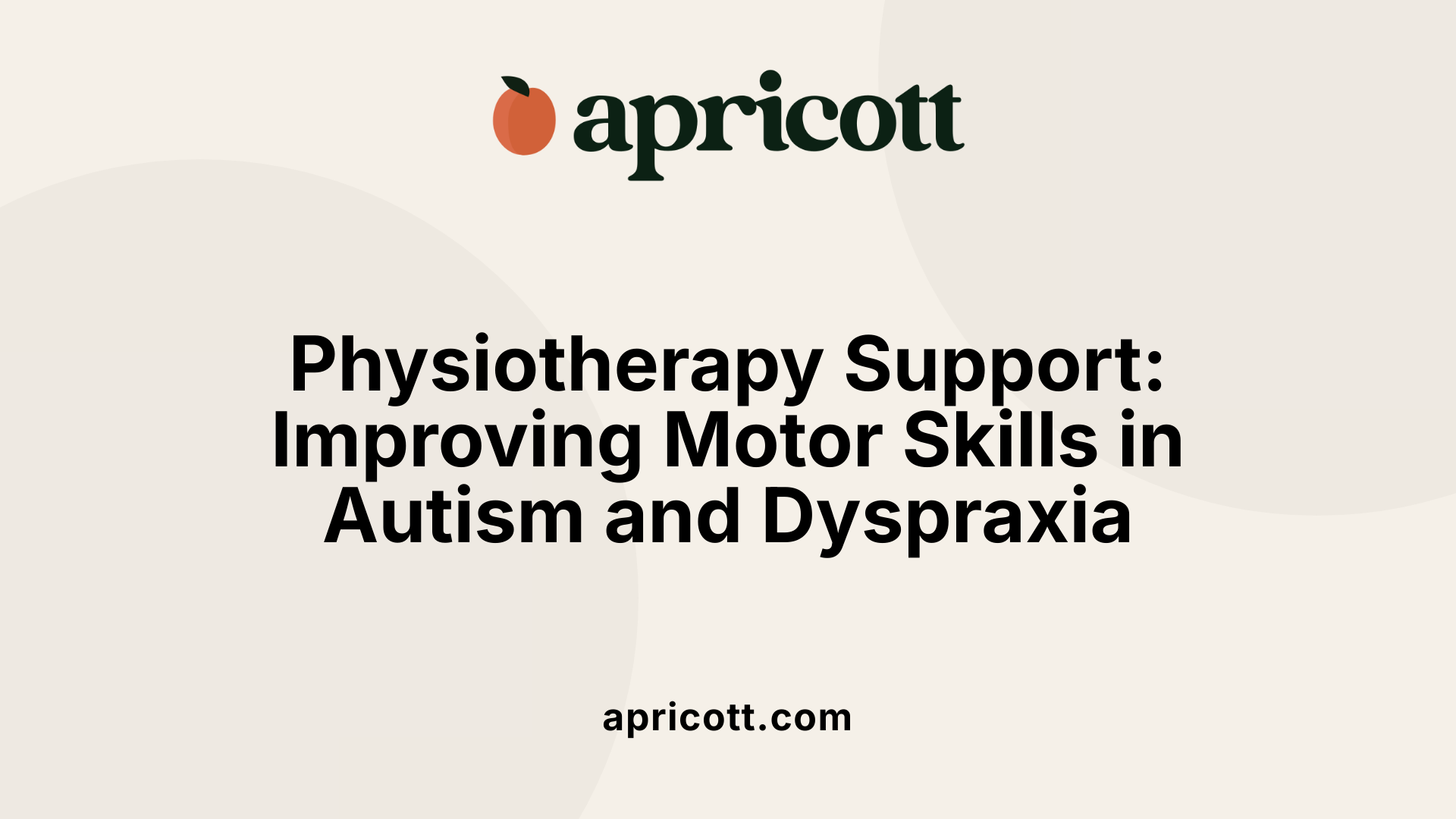
How does physiotherapy benefit children with ASD?
Children with Autism Spectrum Disorder (ASD) commonly face challenges in motor control which affect coordination, balance, and fine motor skills. Physiotherapy plays an essential role by targeting these difficulties through tailored interventions. It helps improve overall motor capabilities, enhances muscle tone and flexibility, and supports children to better participate in daily activities and social environments.
What specific motor skills are improved through physiotherapy?
Physiotherapy focuses on refining key motor skills such as walking, jumping, and fine motor tasks like writing or buttoning. Through individualized programs, children develop better coordination and balance, enabling them to engage more confidently in both physical and social activities.
Which exercise-based treatments does physiotherapy include for children with ASD?
Exercise-based treatments are a cornerstone of physiotherapy for ASD and often incorporate age-appropriate, playful activities such as:
- Jumping and hopping exercises
- Clapping and skipping routines
- Ball games that involve catching and throwing
These activities not only improve motor performance but also promote muscle strength and endurance in a fun, engaging way.
How does hydrotherapy contribute to therapy for children with ASD?
Hydrotherapy, or aquatic therapy, offers unique benefits by using the physical properties of water. The water's pressure and temperature provide calming sensory input that promotes relaxation. It reduces muscle spasticity and enhances range of motion, all while creating a soothing environment that helps children better regulate sensory processing challenges.
Physiotherapy emerges as a vital component in addressing motor challenges faced by children with ASD and dyspraxia, supporting improved motor control, sensory regulation, and everyday functioning through specialized exercises and calming treatments like hydrotherapy.
Sensory Integration Techniques in Physiotherapy for Autism and Dyspraxia
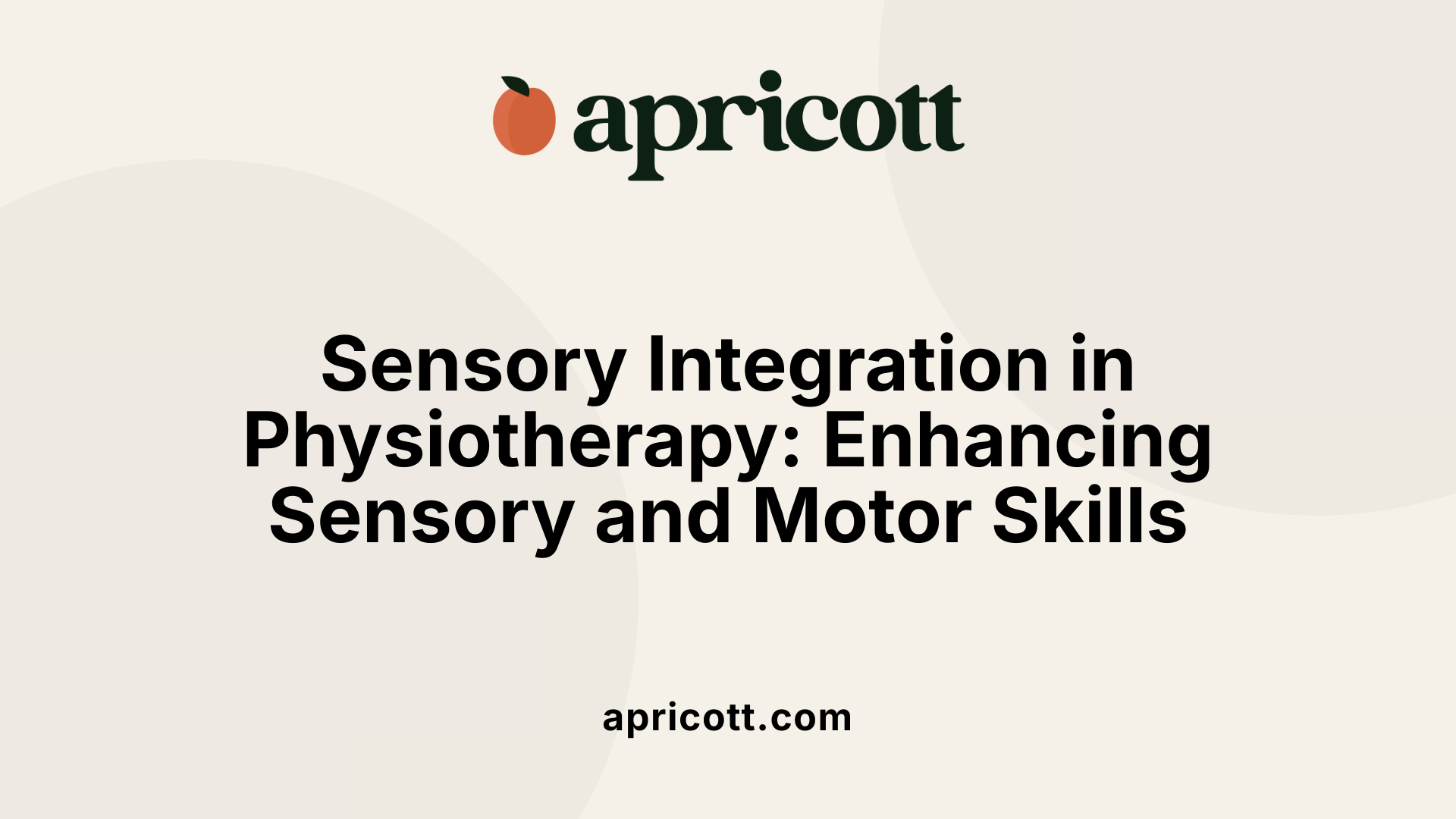
How do sensory processing problems manifest in children with ASD?
Children with autism spectrum disorder (ASD) frequently face challenges in processing sensory information, which can lead to over- or under-responsiveness to stimuli. These sensory processing difficulties often contribute to unpredictable behaviors, heightened anxiety, or sensory seeking actions such as repetitive movements or intense focus on certain sensations.
What are the sensory integration therapy methods used in physiotherapy?
Sensory integration therapy within physiotherapy adopts specialized exercises and activities designed to help regulate and organize sensory input. Techniques may include activities that stimulate the vestibular system (balance and movement), proprioceptive system (body awareness), and tactile system (touch). Tools such as swings, therapy balls, and textured materials are often employed alongside movement-based exercises to encourage proper sensory processing.
How does physiotherapy reduce sensory seeking behaviors?
By providing structured and meaningful sensory experiences, physiotherapy helps satisfy the child’s sensory needs in a controlled way. This reduces the frequency and intensity of sensory seeking behaviors, as children receive appropriate sensory input that calms and organizes their nervous system. Calming techniques, relaxation exercises, and focused movement tasks play a role in channeling excess energy and promoting self-regulation.
In what ways does sensory integration therapy enhance sensory responsiveness?
Therapeutic activities gradually increase a child’s tolerance and responsiveness to various sensory stimuli. This results in improved balance, coordination, and adaptability in daily environments. Enhanced sensory integration allows children with ASD and dyspraxia to better interpret and respond to external cues, fostering improved motor planning and social interaction skills.
Through targeted sensory integration techniques, physiotherapy provides crucial support in managing sensory challenges, thereby contributing to overall motor skill development and behavioral regulation for children with ASD and dyspraxia.
Inversion Therapy: Emerging Approaches to Motor and Cognitive Improvement
Inversion Therapy Methods and Types
Inversion therapy involves positioning the child with their head down using tools like inversion tables, chairs, or physio-balls. This approach aims to elongate the spine, relieve pressure on nerves and ligaments, and enhance circulation. Two main types of inversion therapy are used: static inversion, where the child remains in a fixed head-down position to stretch the spine and ease nerve compression, and intermittent inversion, which involves rocking between upright and inverted postures to boost blood flow and neurological function.
Improvements in Constructional Apraxia and Cognitive Processing
Studies have shown that children with autism spectrum disorder (ASD) experience significant improvements in tasks related to constructional apraxia—such as building towers and copying designs—after inversion therapy. The therapy also supports cognitive processing, enhancing abilities related to motor planning and decision-making. Children receiving combined inversion and sensory integration therapy exhibit even greater benefits, indicating a synergistic effect.
Benefits for Motor Apraxia and Mild Cognitive Impairments
Inversion therapy has been indicated to assist in rehabilitating movement disorders like motor apraxia, which affects the planning and execution of movements, as well as mild cognitive impairments often observed in children with ASD. By improving oxygenated blood flow to the brain, inversion therapy may positively influence motor coordination and cognitive functions fundamental to daily activities.
Combined Sensory Integration and Inversion Therapy Effects
When inversion therapy is paired with sensory integration techniques, children with ASD show enhanced outcomes in motor and cognitive domains. Sensory integration helps manage sensory processing issues, while inversion therapy boosts neurological function and circulation, collectively fostering improvements in behavioral and motor rehabilitation.
| Aspect | Description | Therapeutic Goal |
|---|---|---|
| Static Inversion | Fixed head-down position for spinal stretching | Release nerve compression and relieve pressure |
| Intermittent Inversion | Rocking between upright and inverted positions | Enhance blood flow and neural function |
| Constructional Apraxia Improvement | Better performance in building and copying tasks | Improve motor planning and spatial organization |
| Combined Therapy | Inversion plus sensory integration therapy | Synergistic benefits in motor and cognitive skills |
Early Intervention: Tailored Motor Skills Development in Children with ASD and Dyspraxia
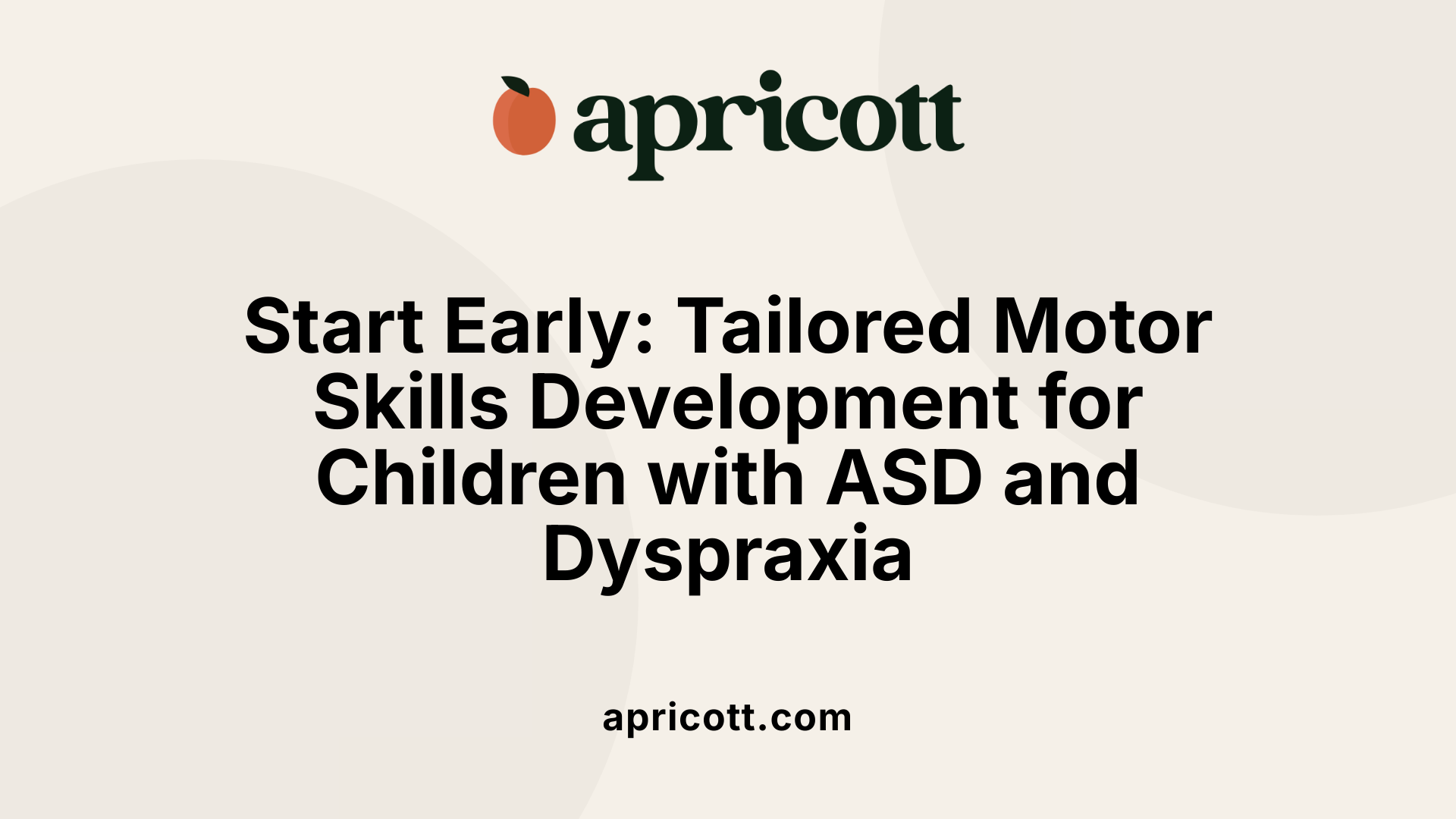
Why Is Early Physiotherapy Important for Children with ASD and Dyspraxia?
Early physiotherapy plays a crucial role in addressing motor delays commonly seen in children with Autism Spectrum Disorder (ASD) and dyspraxia. These children often face challenges with coordination, balance, and motor planning which, if left unaddressed, might affect their daily functioning and independence. Initiating physiotherapy early helps develop foundational motor skills that support not only physical activity but also social participation and cognitive development.
What Types of Activities Are Used to Develop Motor Skills?
Specialized exercises form the backbone of early physiotherapy interventions. Activities such as mirror exercises, which encourage imitation and movement awareness, and arm circles that enhance shoulder mobility, are commonly incorporated. Additionally, dynamic and engaging movements like bear crawls, star jumps, and hurdle step-overs promote strength, balance, and coordination. These exercises are carefully selected to be age-appropriate and enjoyable, helping children stay motivated while improving their motor abilities.
How Do Physical Fitness and Tailored Education Programs Support Development?
Promoting physical fitness through customized physical education programs is essential for these children. Tailored programs focus on improving muscle tone, flexibility, and overall motor performance. They also provide the framework for children to practice skills in structured environments, promoting better integration with peers. These programs help maximize the child's physical potential while boosting confidence and independence.
In What Ways Does Physiotherapy Support Independence and Motor Milestones?
Physiotherapy interventions aim to empower children to achieve developmental milestones such as walking, jumping, or fine motor tasks like buttoning clothes. Improved motor control facilitates greater participation in daily activities, fostering autonomy. By enhancing coordination and strength, children are better equipped to engage socially and academically, setting a foundation for a higher quality of life.
| Aspect | Intervention Examples | Impact on Child |
|---|---|---|
| Early Physiotherapy Importance | Early motor skill exercises | Reduces delay, builds motor foundations |
| Activities | Mirror exercises, arm circles, bear crawls | Improves coordination and balance |
| Fitness & Education | Tailored PE programs | Enhances muscle tone and social participation |
| Independence & Milestones | Skill-focused physiotherapy | Supports daily activities and social engagement |
Applied Behavior Analysis (ABA) Therapy: An Overview
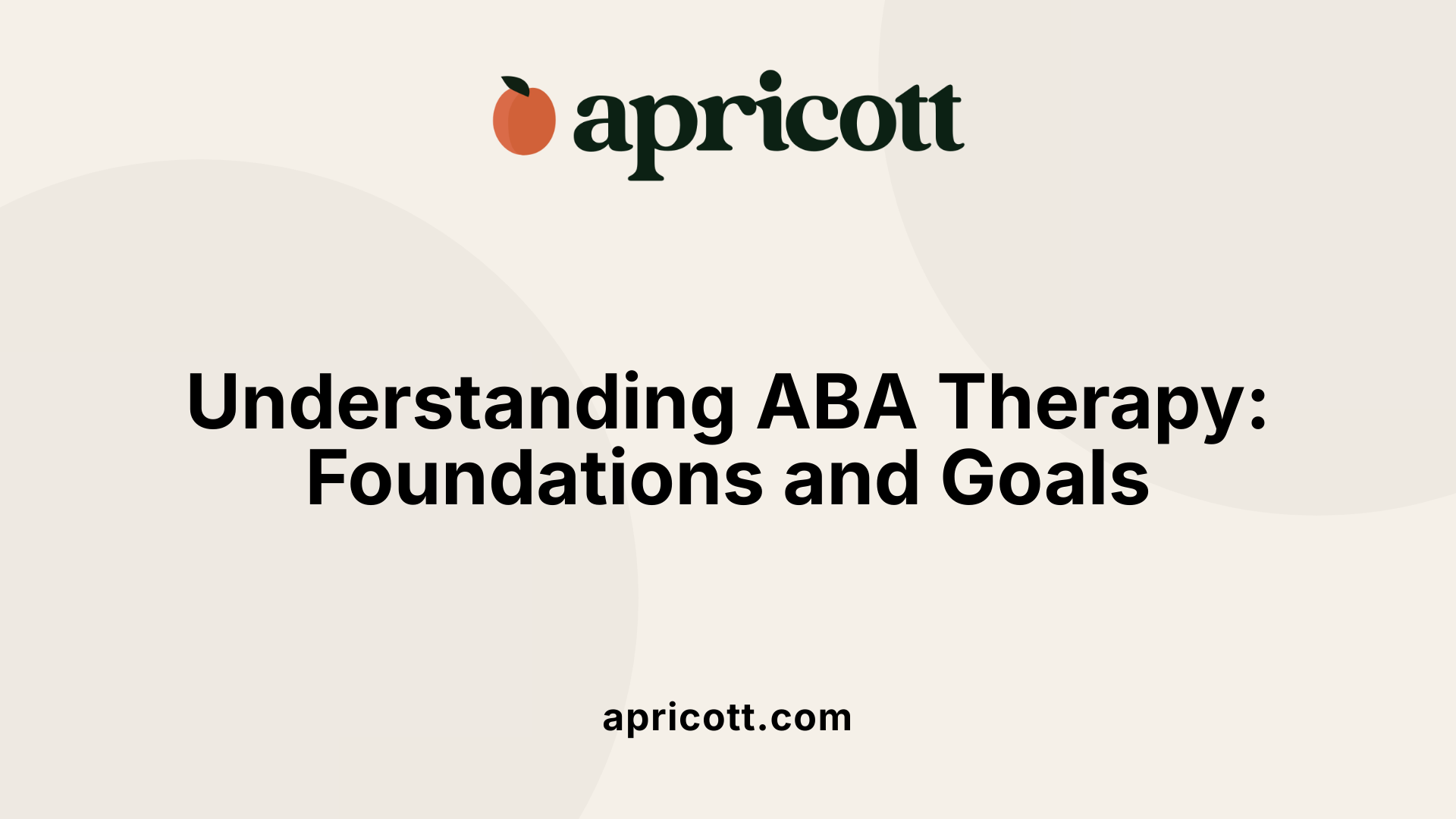
What is Applied Behavior Analysis (ABA) therapy?
Applied Behavior Analysis (ABA) therapy is a scientifically grounded approach designed to understand and improve behaviors by examining their causes and effects. Primarily used to support individuals with autism spectrum disorder (ASD), ABA aims to encourage positive behaviors like communication, social interaction, and self-care, while decreasing challenging or harmful behaviors.
Goals of behavior improvement
The therapy's main goal is to foster adaptive and functional behaviors that enhance daily living and social participation. This involves teaching new skills and reducing behaviors that may interfere with learning or safety. ABA strives to improve quality of life, independence, and overall functioning.
Customization and settings for ABA therapy
ABA programs are highly individualized to fit each person's unique profile, preferences, and needs. Therapists develop customized plans based on thorough assessments and may implement these interventions across various settings such as the home, school, or community environments. This flexibility ensures that gains can generalize to real-world situations.
Techniques used such as positive reinforcement and functional communication training
Core ABA techniques include positive reinforcement, where desirable behaviors are rewarded to increase their frequency, and prompting, which helps guide individuals toward correct responses. A key component is functional communication training (FCT), which teaches effective communication methods to replace problem behaviors. Additional strategies like response chaining and delay tolerance training are used to build complex skills and patience. Continuous monitoring ensures a compassionate, trauma-informed delivery tailored to each individual.
By integrating these approaches, ABA therapy has demonstrated significant reductions in challenging behaviors and enhancements in adaptive skills. It remains one of the most extensively researched and endorsed treatments for ASD, contributing positively to the lives of many individuals and their families.
How ABA Therapy Supports Individuals with Autism
How does ABA therapy help individuals with autism?
ABA therapy, or Applied Behavior Analysis, is a widely recognized approach that supports individuals with autism by focusing on social, communication, and daily living skills. Through highly structured and individualized programs, ABA uses behavior modification techniques such as positive reinforcement to encourage helpful behaviors while reducing challenging or disruptive behaviors. This targeted approach helps improve overall functioning and quality of life.
What role does early intervention and family involvement play in ABA therapy?
Early intervention is a crucial element of ABA therapy. Starting treatment at a young age promotes emotional and social development more effectively. Involving family members, especially parents, ensures that the skills learned during therapy can be generalized and used in everyday life. This collaborative approach helps create a consistent, supportive environment for the child.
How does ABA focus on behavior modification and skill building?
ABA programs teach a broad range of adaptive and functional behaviors. Techniques include teaching functional communication responses (FCRs), tolerance for delay and denial, and transitioning between activities. By structuring learning in small, manageable steps and continuously monitoring progress, ABA helps individuals replace challenging behaviors with productive, socially appropriate ones.
How does ABA respect neurodiversity and individual strengths?
Modern ABA approaches emphasize respect for neurodiversity by tailoring programs to build on individual strengths rather than solely focusing on deficits. Therapy encourages independence and active participation in social and educational settings without trying to erase unique autistic traits. This compassionate, trauma-informed approach fosters positive outcomes while honoring the individuality of each person.
| Aspect | Description | Impact |
|---|---|---|
| Social & Communication Skills | Structured teaching of communication and social interactions | Improved relationships and engagement |
| Early Intervention & Family | Programs begin early with significant parent involvement | Better generalization of skills and emotional growth |
| Behavior Modification | Use of reinforcement and teaching functional replacements | Reduced challenging behaviors and increased adaptive responses |
| Neurodiversity Respect | Tailoring therapy to individual strengths and needs | Encourages independence and self-acceptance |
ABA Therapy Providers and Their Qualifications
Who Provides ABA Therapy Services?
ABA therapy is delivered by a range of trained professionals dedicated to supporting individuals with autism spectrum disorder (ASD) and related developmental conditions. Key providers include Board Certified Behavior Analysts (BCBAs), Registered Behavior Technicians (RBTs), speech therapists, and behavior specialists. These professionals work closely with children and their families in various settings such as homes, schools, community centers, and increasingly, via telehealth.
Many organizations employ multidisciplinary teams of certified experts who deliver tailored treatment programs. These providers conduct assessments, develop individualized intervention plans, train parents and caregivers, and focus on improving communication, social skills, and daily functioning.
Educational Background and Certification of ABA Therapists
Most ABA therapists begin their careers with a bachelor’s degree in psychology, education, or related fields. Many then advance to a master’s degree in Applied Behavior Analysis to meet the certification standards required for practice. Certification credentials such as the Board Certified Behavior Analyst (BCBA) or the Board Certified Assistant Behavior Analyst (BCaBA) are earned after completing specific coursework, accumulating supervised fieldwork—which usually ranges between 1,500 to 2,000 hours—and passing rigorous exams.
Licensing rules differ by state but generally mandate certified credentials paired with practical experience. Therapists must engage in continuing education to maintain their certification, ensuring they are updated on best practices. Alongside formal education, these professionals develop competencies in behavioral assessment, data gathering, and intervention planning. Strong interpersonal skills, including critical thinking, empathy, and active listening, are vital for successful therapeutic relationships.
Role of BCBAs, RBTs, and Speech Therapists
BCBAs typically oversee the design and supervision of treatment plans, ensuring interventions align with the child's unique behavioral needs. RBTs often provide direct one-on-one therapy under BCBA supervision, facilitating the day-to-day implementation of behavior plans. Speech therapists focus on enhancing communication skills, which frequently accompany ABA services to address social and functional communication challenges in individuals with ASD.
Settings for ABA Therapy Delivery
ABA therapy is remarkably flexible and can be provided in multiple environments. In-home therapy offers comfort and naturalistic learning opportunities. School-based services integrate behavior intervention into educational goals. Community-based programs support generalization of skills in real-world settings. Telehealth has gained prominence, allowing remote delivery of services, especially useful in areas with limited access to specialists.
Importance of Interdisciplinary Collaboration
Effective ABA therapy often involves interdisciplinary teamwork, including occupational therapists, physiotherapists, speech-language pathologists, educators, and caregivers. Collaborative approaches ensure comprehensive care addressing both behavioral and skill-based needs, fostering improved outcomes across social, cognitive, and physical domains.
This coordinated effort also supports the customization of interventions to meet the complex and overlapping needs of children with ASD, ensuring therapy is holistic and family-centered.
Target Goals in ABA Therapy for Autism Spectrum Disorder
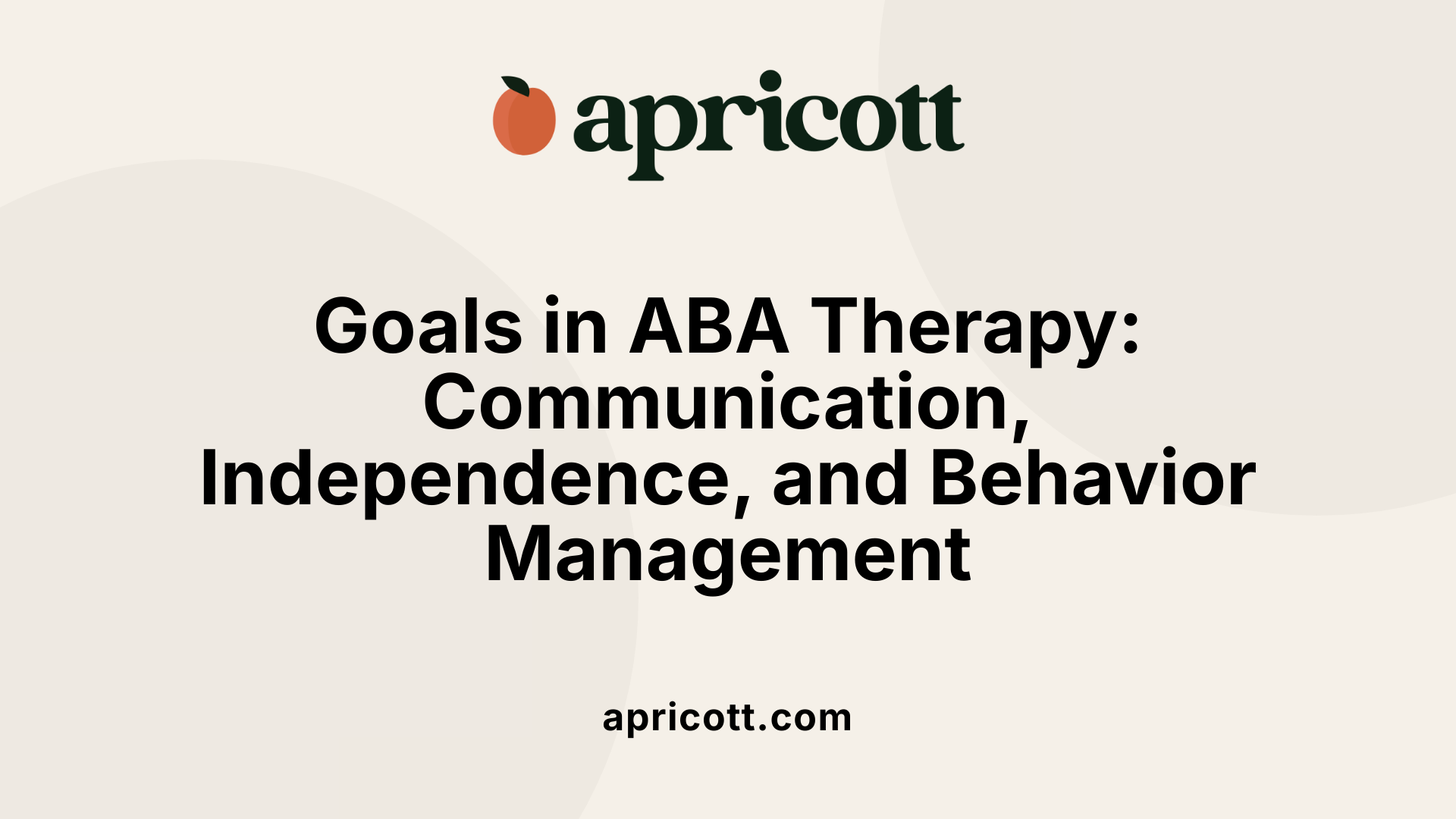
What are common goals targeted in ABA therapy for autism?
Applied Behavior Analysis (ABA) therapy is widely used to support individuals with autism spectrum disorder (ASD) by addressing a variety of developmental needs. One primary focus is improving communication and language skills. ABA therapies work on both expressive language (how the child expresses themselves) and receptive language (how they understand others), which can include foundational communication abilities and more complex language use.
Enhancing social interaction is another vital goal. This involves teaching social skills that enable children to engage with peers and adults more effectively. Such skills include turn-taking, initiating conversations, and understanding social cues.
Promoting independence in daily living skills is also important in ABA therapy. This goal focuses on encouraging children to perform self-care and everyday routines independently, such as dressing, eating, and basic hygiene. This fosters greater autonomy and participation in daily activities.
Reducing problematic behaviors is a major aim as well. ABA strategies target behaviors like aggression, self-injury, tantrums, and repetitive actions by teaching alternative, functional behaviors and implementing behavior reduction techniques.
How does ABA therapy maintain and generalize gained skills?
ABA therapy emphasizes not only acquiring new skills but also ensuring these skills are maintained over time and generalized across various settings and people. This involves continuous monitoring, reinforcement of learned behaviors, and tailoring treatment plans to facilitate the application of skills beyond clinical settings—at home, in school, and within the community.
Together, these goals form a comprehensive approach that supports improved functional skills, better behavior management, and enhanced quality of life for individuals with ASD. ABA therapy's flexibility allows it to be adapted to the unique needs of each child, supporting their growth in communication, socialization, independence, and behavior regulation.
Skill-Based Treatment (SBT) as a Modern Approach to Challenging Behaviors in ASD
Components of Skill-Based Treatment
Skill-Based Treatment (SBT) is a contemporary approach designed to address challenging behaviors in children with Autism Spectrum Disorder (ASD). It integrates various behavioral procedures, focusing on teaching functional communication and adaptive skills. A hallmark of SBT is its comprehensive nature, incorporating response chaining, delay and denial tolerance training, and continuous monitoring of patient affect. This approach prioritizes a trauma-informed and compassionate methodology, ensuring interventions consider the individual's emotional wellbeing.
Functional Communication Training
At the heart of SBT lies Functional Communication Training (FCT). FCT aims to teach a broad, omnibus functional communication response (FCR) that addresses multiple functions of challenging behavior simultaneously. This allows children to replace problematic behaviors with effective, adaptive communication strategies, facilitating smoother interactions and reducing frustration.
Behavior Reduction Outcomes
Research demonstrates that SBT can dramatically reduce challenging behaviors in children with ASD. On average, studies report a reduction of approximately 98.2% in such behaviors. These impressive outcomes highlight the treatment's efficacy in promoting functional and adaptive responses, including complex FCRs and contextually appropriate behaviors like transitioning between activities and cooperative engagement.
Implementation Settings Including Telehealth
SBT's flexibility is evident in its applicability across diverse settings. It can be effectively implemented in clinics, homes via telehealth, and schools, making it accessible to many families. Recent evidence shows the feasibility of telehealth delivery with parents or caregivers acting as the primary treatment implementers. However, further research is needed to confirm its effectiveness for non-vocal or minimally verbal individuals.
Treatment Dosage and Intensity
Treatment duration and intensity vary widely, with some protocols scheduling intensive daily sessions of five or more days per week. Total treatment hours can reach up to 48.5 hours, spanning from less than a week to several months. This variability allows customization based on individual needs, enhancing the intervention's applicability across different ages, language levels, and behavioral complexities.
Telehealth and Parent Implementation in Behavioral Therapies
How feasible and beneficial is telehealth delivery for behavioral therapies?
Telehealth delivery of behavioral therapies has become increasingly feasible, offering convenient access to treatment in various settings such as homes, clinics, and schools. Recent studies demonstrate that telehealth approaches can effectively support therapy continuity and increase intervention reach, particularly amidst challenges like geographic barriers or public health concerns.
What roles do parents and caregivers play in telehealth behavioral interventions?
Parents and caregivers often serve as primary treatment implementers during telehealth sessions. They are trained and coached to carry out therapeutic procedures, including skill-based treatment (SBT), enabling consistent practice of adaptive behaviors outside of clinical settings. This involvement not only empowers families but promotes generalized learning and maintenance of treatment gains.
How effective is telehealth therapy for individuals with varying communication abilities?
While telehealth SBT shows promise, research into its efficacy for individuals with limited verbal communication or non-vocal individuals remains limited. Preliminary data suggest that adaptations can be made to accommodate diverse communication needs, but further studies are needed to establish best practices and effectiveness across the full spectrum of verbal abilities.
What are the current evidence and gaps in research regarding telehealth behavioral therapies?
Though supportive evidence exists, most telehealth SBT studies include small samples and single-case designs. Additionally, long-term follow-up data are scarce. Larger randomized controlled trials and more robust research are essential to confirm the safety, efficacy, and sustainability of telehealth behavioral interventions, especially those involving parent implementation.
The emerging hybrid model combining telehealth delivery with active parent participation represents a promising direction in expanding access to effective behavioral therapies for individuals with autism spectrum disorder.
Comorbid Conditions and Multidisciplinary Intervention Strategies
How Are Dyspraxia and Motor Coordination Difficulties Related to Autism?
Dyspraxia, characterized by challenges in planning and coordinating movements, is notably more common among individuals with autism spectrum conditions (ASC). Research shows adults with ASC are over eight times more likely to have dyspraxia than those without, linking motor coordination difficulties closely with autism. These motor skill challenges often persist into adulthood, affecting daily functioning and social participation.
What Speech and Language Delays, Including Childhood Apraxia of Speech (CAS), Are Seen in Autism?
Speech delays and disorders frequently accompany autism. Childhood apraxia of speech (CAS), a motor speech disorder involving inconsistent errors and difficulty with speech transitions, can co-occur with autism, though diagnosis remains complex. About one in six autistic children may have suspected CAS. Speech therapy tailored to their unique needs often involves building foundational communication skills and may include augmentative and alternative communication (AAC) tools to enhance effectiveness.
How Do Interdisciplinary Teams Support Children with Autism?
Effective intervention for children with autism and comorbid conditions relies on collaboration among professionals. Physiotherapists, occupational therapists, speech pathologists, and behavior analysts work together to address motor, speech, and behavioral challenges. Behavioral interventions like applied behavior analysis (ABA) and skill-based treatments support adaptive behaviors, while therapies such as sensory integration and physiotherapy improve motor control and sensory processing.
Why Is Tailored Support Essential for Motor, Social, and Sensory Needs?
Children with autism and additional conditions require customized support addressing motor difficulties, social communication, and sensory sensitivities. Combining therapies ensures comprehensive care that fosters independence, enhances daily living skills, and improves participation in social and educational settings. This holistic approach maximizes progress and quality of life for children facing diverse challenges.
Speech Challenges in Autism: The Overlap with Childhood Apraxia of Speech
What Are the Features and Diagnosis of Childhood Apraxia of Speech (CAS)?
Childhood Apraxia of Speech is characterized by specific speech difficulties. Diagnosis involves observing speech features such as inconsistent errors, lengthened transitions between sounds, and atypical prosody or rhythm in speech. These markers help distinguish CAS from other speech disorders, although they can sometimes resemble aspects of speech difficulties seen in autism.
How Common Is CAS Among Children with Autism?
Speech-language pathologists estimate that about one in six children diagnosed with autism spectrum disorder (ASD) may have suspected CAS. However, confirming this diagnosis can be complex due to overlapping signs between autism and CAS. Current research offers conflicting conclusions on whether CAS is more prevalent in children with autism compared to those without.
What Speech Therapy Strategies Are Used for Children with Both Autism and CAS?
Speech therapy for children facing these concurrent challenges is tailored individually. Approaches often focus first on foundational communication skills and use play-based or interest-driven methods to engage the child effectively. Augmentative and Alternative Communication (AAC) techniques are also frequently incorporated to support communication, especially for those who are minimally verbal.
Why Is It Difficult to Confirm CAS Diagnosis in Autistic Children?
Many children with autism exhibit a broad spectrum of speech and language delays, and some may have minimal verbal abilities. This variability makes it challenging to accurately identify CAS, as certain symptoms of autism can mirror those of CAS. The overlapping speech characteristics and complexity in differentiation require careful, expert evaluation.
This overlap between ASD and CAS highlights the need for comprehensive assessment and individualized therapeutic plans to best support affected children's communication development.
Physical Activity and Motor Skill Promotion in Children with ASD and Dyspraxia
Importance of Physical Fitness and Tailored Programs
Physical fitness is fundamental for children with Autism Spectrum Disorder (ASD) and dyspraxia, conditions that often affect motor skills and coordination. Tailored physical activity programs are essential to address their unique motor challenges and to promote overall health. These programs focus on strengthening muscle tone, improving balance, and enhancing coordination, which are critical for daily functioning and independence.
Activities Supporting Cognitive Development and Health
Engaging children in motor skill exercises such as jumping, clapping, skipping, hopping, and various ball games can significantly boost their motor performance while simultaneously supporting cognitive development. These activities not only improve physical capabilities but also enhance brain functions related to motor planning and spatial awareness, which are often affected in children with dyspraxia and ASD.
Motivation and Engagement Through Play-Based Strategies
Play-based and interest-oriented strategies are highly effective for motivating children to participate actively in physical therapy and exercise routines. Incorporating fun and familiar games encourages consistent involvement, which is vital for progress. These activities also help regulate sensory processing challenges by integrating sensory integration techniques, making the experience enjoyable and beneficial on multiple levels.
Role in Overall Developmental Outcomes
Physical activity plays a holistic role in the development of children with ASD and dyspraxia by fostering better social participation and enhancing cognitive and emotional well-being. Improvements in motor skills contribute to greater independence in daily tasks and school readiness. Additionally, engaging in structured physical activities helps reduce challenging behaviors and promotes relaxation, further supporting positive developmental trajectories.
| Aspect | Benefits for Children with ASD and Dyspraxia | Examples/Details |
|---|---|---|
| Physical Fitness | Improves muscle tone, balance, and coordination | Tailored exercises targeting motor deficits |
| Cognitive Development | Enhances motor planning and spatial skills | Activities such as hopping, jumping, and ball games |
| Motivation & Engagement | Increases participation through enjoyable, play-based methods | Use of games and sensory integration techniques |
| Developmental Outcomes | Supports independence, social engagement, and behavioral control | Improved school readiness and reduced hyperactivity |
Behavioral Regulation through Physiotherapy and Exercise
How does physiotherapy help manage hyperactivity and repetitive behaviors in children with ASD?
Physiotherapy plays an important role in behavioral regulation for children with autism spectrum disorder (ASD). Through tailored physical activities, it helps reduce hyperactivity and repetitive behaviors that often interfere with daily functioning and social interaction.
What physical activities promote relaxation and energy channeling?
Specific exercises such as jumping, clapping, skipping, and ball activities are designed not only to improve motor coordination but also to channel excess energy constructively. Hydrotherapy offers calming sensory input through water pressure and temperature, promoting relaxation and reducing muscle tension.
How does physiotherapy enhance quality of life and participation?
Improved motor skills through physiotherapy increase children's independence in daily tasks like writing or buttoning, thereby enhancing their overall quality of life. These gains enable better participation in social and educational environments, fostering inclusion and personal growth.
What is the connection between motor skills and social functioning?
Motor coordination is intimately linked to social skills and empathy. Difficulty with motor planning can impact nonverbal communication and social engagement. Therefore, addressing motor challenges through physiotherapy may positively influence social functioning by improving physical confidence and interaction capability.
Physiotherapy interventions create a holistic approach that not only targets physical development but also supports behavioral regulation and social participation, helping children with ASD lead more balanced and fulfilling lives.
Collaborative Teamwork: Integrating Therapies for Holistic Care
What roles do physiotherapists, occupational therapists, speech therapists, and behavior analysts play?
Children with ASD and dyspraxia benefit from a multidisciplinary approach that leverages the expertise of various specialists. Physiotherapists focus on improving motor skills, coordination, balance, and muscle tone through exercises and sensory integration techniques. Occupational therapists support fine motor skills and daily living activities, while speech therapists target communication challenges including potential co-occurrence with childhood apraxia of speech (CAS). Behavior analysts employ interventions like skill-based treatment (SBT) and applied behavior analysis (ABA) to address challenging behaviors and promote adaptive skills.
How do professionals communicate and coordinate care?
Effective teamwork requires regular communication and collaboration among professionals. Multidisciplinary teams share assessments, treatment plans, and progress updates to ensure interventions are complementary and holistic. Coordination helps address overlapping issues such as sensory processing, motor difficulties, and behavioral challenges cohesively rather than in isolation.
How is family involvement incorporated?
Families play a central role in the treatment process. Training and involvement empower caregivers to carry over therapy goals into everyday environments, enhancing skill generalization and consistency. Professionals guide families on how to support physical activities, communication strategies, and behavioral techniques at home.
Why are holistic, tailored treatment plans important?
Each child with ASD and dyspraxia has unique needs that span motor, communication, social, and sensory domains. Holistic plans combine physical, speech, and behavioral therapies targeting these areas simultaneously. Tailoring ensures that interventions respect individual strengths, challenges, and preferences, optimizing functional outcomes and quality of life.
Future Directions and Research Needs in Dyspraxia and Autism Therapies
Need for Long-Term Follow-Up Studies
While numerous interventions show promise in managing dyspraxia and autism-related challenges, a significant gap remains in long-term follow-up data. Only about 8% of current studies include extended monitoring after treatment ends, making it difficult to evaluate whether improvements in motor coordination, communication, and behavior are sustained over time. Expanding follow-up assessments will provide better insights into maintaining gains and optimizing ongoing support.
Randomized Controlled Trials for ABA and SBT
Applied Behavior Analysis (ABA) remains the gold standard for addressing challenging behaviors in ASD, and Skill-Based Treatment (SBT) has emerged as a complementary, potentially safer approach. However, much of the existing research relies on small sample sizes and single-case designs. Conducting large-scale randomized controlled trials will be crucial to rigorously establish the safety, efficacy, and generalizability of these therapies across diverse populations and behavioral presentations.
Exploration of New Therapies Like Inversion Therapy
Emerging treatments such as inversion therapy, which involves positioning children head-down to promote spinal elongation and improved neurological circulation, show promising benefits particularly for motor apraxia and cognitive processing in children with ASD. Future research should continue to investigate such innovative approaches—alone and combined with sensory integration therapies—to determine their effectiveness and potential role in comprehensive rehabilitation programs.
Innovations in Telehealth and Remote Interventions
Recent years have seen a rise in telehealth-delivered therapies, allowing treatment access in home and school environments, even amidst challenges like limited mobility or geographic barriers. Initial studies indicate that approaches like SBT can be effectively implemented remotely with caregiver involvement. Expanding research into telehealth modalities, especially for individuals with minimal verbal communication and complex needs, will support broader dissemination and tailored intervention delivery.
Overall, advancing research through rigorous trials, enhanced long-term tracking, exploration of novel methods, and telehealth innovations will strengthen outcomes for individuals with dyspraxia and autism, enabling more effective, accessible, and personalized care.
Towards Integrated Care and Improved Outcomes for Dyspraxia and Autism
The interplay between dyspraxia and autism presents multifaceted challenges that impact motor coordination, communication, behavior, and daily functioning. Understanding these complexities underscores the importance of targeted therapeutic approaches including physiotherapy, behavior analysis, and speech therapy — all delivered within a multidisciplinary framework. Modern treatments like Applied Behavior Analysis and Skill-Based Treatment demonstrate significant promise in improving adaptive skills and reducing challenging behaviors, while emerging modalities such as inversion therapy offer additional avenues for motor and cognitive enhancement. Embracing individualized, evidence-based interventions and fostering collaboration among professionals and families will be crucial in advancing quality of life and independence for individuals affected by these conditions. Continued research and innovation remain essential to refine therapies, extend access, and ensure durable positive outcomes across the lifespan.
References
- Autism Spectrum Disorder and Motor Development
- Dyspraxia and autistic traits in adults with and without autism ...
- Is dyspraxia linked to autism? - daar Knowledge Base
- Research in Autism Spectrum Disorders
- Efficacy of Static and Intermittent Gravity Inverted Therapy ...
- Could It Be Both? Distinguishing Between Autism and ...
- How to Become an ABA Therapist - School of Education
- How to Become an Applied Behavior Analyst (ABA) Therapist
.svg)
.svg)








